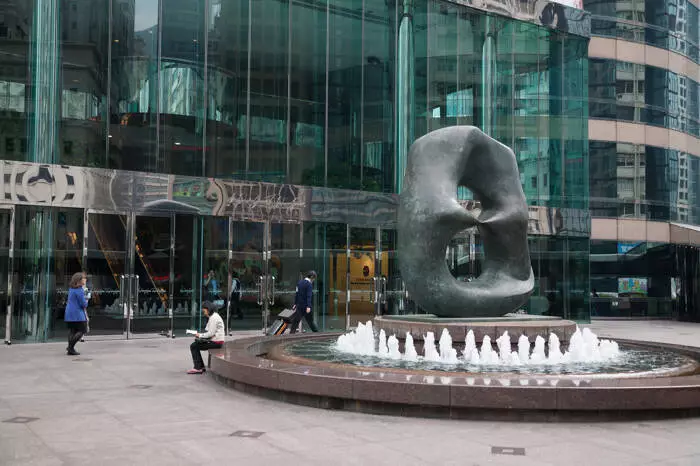The Hang Seng Index has recently demonstrated a concerning trend by maintaining its downward trajectory for four consecutive weeks, noting a decline of 0.41%. Key factors contributing to this slump are the intensifying prospects of a potential Donald Trump victory in the upcoming presidential elections and a notable downturn in the tech sector. As the political landscape progresses, markets are increasingly acknowledging Trump’s diminishing distance in polling scores against Kamala Harris. This shift not only speculates a possible return to the White House for Trump but also raises apprehensions regarding economic implications, particularly the likelihood of imposing punitive tariffs on Chinese imports, which could constrain economic activity in the region.
The ramifications of Trump’s potential re-election extend beyond just the political arena; they have tangible effects on investor sentiment and market valuations. The anticipation of tariffs is likely to create an environment of uncertainty among investors regarding the future of trade relations between the U.S. and China. Compounding this situation is the poor performance of the tech sector, exemplified by the Hang Seng Tech Index (HSTECH), which fell by 1.19%. Among the heavyweights, Alibaba (9988) and Tencent (0700) recorded meager declines of 0.37% and 0.36%, respectively, indicating the challenges faced by major technology enterprises in this uncertain climate.
On a brighter note, Baidu (9888) saw an uptick of 1.49%, showcasing a possible segmental divergence within the tech space, but this was not enough to shift the overarching negative sentiment. Concurrently, real estate shares showed resilience, buoyed by sentiment surrounding China’s policy initiatives, with the Hang Seng Mainland Properties Index (HMPI) appreciating by 4.80%. This contrast points toward an inclination towards asset diversification amid prevailing market stresses.
Turning to the Mainland markets, fears catalyzed by potential U.S. tariffs overshadowed recently released Purchasing Managers’ Index (PMI) figures, reflecting the fraught atmosphere. The CSI 300 index saw a marked decline of 1.68%, while the Shanghai Composite index refrained from severe losses at 0.84%. These declines highlight the nexus between U.S. trade policies and Chinese market vulnerability. Investors appear to be weighing macroeconomic indicators alongside geopolitical risks heavily, potentially limiting their engagements in high-risk assets.
Commodity markets exhibited a mixed performance during the week, with tensions evident in specific segments. Iron ore prices fell by 2.72%, indicating reduced demand anticipation amidst global economic uncertainty. Similarly, gold faced a downward trend, dipping 0.41% despite it reaching an impressive milestone of $2,790 earlier. This decline can be attributed to a softening of investor demand influenced by shifting economic projections.
Contrastingly, WTI crude oil prices saw an upswing, largely attributable to rising geopolitical unrest in the Middle East, demonstrating how global affairs can skew commodity pricing. The interplay of these factors reflects the complex landscape within which investors are operating.
In Australia, the ASX 200 faced a setback, declining by 1.13% as broader market forces aligned against it. This downturn follows a noteworthy 0.87% loss in the prior week. The ongoing dip in gold prices and speculation regarding U.S. Federal Reserve rate adjustments—particularly in light of the jobs report—have dampened the demand for stocks within the ASX 200 index. High-yield banking stocks, including National Australia Bank (NAB) and ANZ, experienced slips of 1.90% and 2.02%, showcasing vulnerability among Australian financials.
Conversely, Japan’s Nikkei Index displayed a glimmer of hope, gaining 0.37% as a result of favorable election outcomes impacting the Japanese Yen. The Liberal Democratic Party (LDP) coalition’s struggles drew investor interest in stocks, propping up the Index. Yet, underlying concerns remained about the future direction of monetary policy under the Bank of Japan’s stewardship.
As we consider the outlook, attention turns toward pivotal forthcoming events, which include the Reserve Bank of Australia’s interest rate meeting, the U.S. presidential election, and the National People’s Congress Standing Committee meeting in China. Each of these events holds the potential to significantly influence market sentiment and risk appetite among investors. An anticipated stimulation from Beijing may serve to counterbalance the adverse effects stemming from the U.S. electoral results. In this increasingly complex financial landscape, ongoing vigilance and strategic positioning will be paramount for investors to navigate the tumultuous waters ahead.

